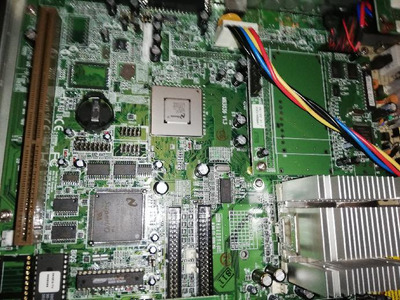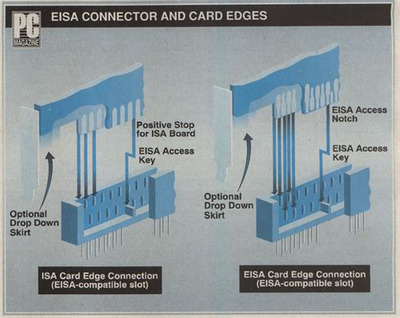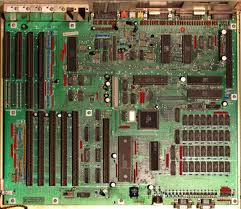Reply 320 of 426, by Jo22
- Rank
- l33t++
.. but EISA was a true, 99% compatible successor to ISA and the most "open" of them. It was made by a group, the Gang of Nine.
VL-Bus had its electrical issues and PCI was owned by Intel (also, in practice, it was non-existant in the early 90s).
By comparison, EISA cards were usually of higher quality, available and contained matured chips.
https://en.wikipedia.org/wiki/Extended_Indust … rd_Architecture
By the way, theoretical transfer speed isn't everything. A good bus design has little overhead and a quick response time (latency).
On paper, PCI promised high speeds, yes, but depending on the implementation barely reached half of it in practice.. 😉
Kind of reminds me of USB 2.0, which was a lame duck, too.
In which way are Zorro II and Zorro III superior ? On the physical side, I mean.
Auto-config was neat, seriously, but that was done by Amiga OS and could have worked on any bus.
In fact, there's something that was missed. If they were putting their hearts into it,
they could have stored the device drivers on the cards themselves (in an ROM chip), as well.
Ideally, these drivers would have used some sort of P-Code instead of machine language.
That way, they would have had worked among different CPU generations.
Zorro II seems to have similar specs like ISA, just a bit slower. That's what it was designed for (ISA), I suppose.
And Zorro III uses multi-plexing, which isn't really that ingenious, IMHO. The 8088 already did that.
Reminds me of 7-segment displays, too. If connected the cheap way (multi-plexed) they do flicker a lot.
Edit: I'm afraid there's a misunderstanding. 😅
I ddidnt mean that tth Amiga's Zorro bus itself should have been replaced by EISA..
I meant the ISA portion behind it (can hold EISA/ISA/XT bus cards) could have been upgraded to EISA.
I think it would have been nice if Commodore did sell upgrades for the Amiga 2000's Zorro/ISA backplane (or rather, logic board).
As a semi drop-in replacement (if chips were socketed.)
These new backplanes would have had Zorro II/III and EISA connectors.
Because, I think, EISA didn't require a very long bus slot (as VESA's VLB did).
For adding VLB in the same way, the Amiga 2000 's chassis and motherboard were too small and tight (see pic).
But that's not the case with EISA slot - it had the same dimensions as the Zorro II/ISA connectors.
In fact surplus EISA connectors were still used in the late 90s/early 2000s.
Set-Top boxes like the Surfstation JNT used them for combined ISA/PCI backplanes.
That way, the Amiga owner could have kept the existing Zorro II/ISA bridgeboards
and PC emulator boards, withoutany advantages or disadvantages.
But if more performances was needed, the lower row (EISA part) of the edge connector could have been used by hardware that supports it.
Or which did find it useful (EISA devices used IDs and config files on floppies).
(Edit: PC emulator boards with EISA support could have had contained an internal database with a selection of popular config file data.
This approach could have been much more conveniant than on a real PC.)
Or in simple words, the native, 32-Bit component of EISA could have been used in a special way (if needed, I'm just a layman).
Or EISA could have been used as a reason to backport Zorro III to the A1500/2000 platform.
With EISA, there technically was a nice companion to interface with and both the classics would have been fully 32-Bit (slot wise).
Anyway, this was just a Gedankenexperiment (what if). There also was Microchannel, too. In both 16 and 32-Bit flavour. 😉
Edit: Typos fixed. Sorry for that, was using a smartphone before.
"Time, it seems, doesn't flow. For some it's fast, for some it's slow.
In what to one race is no time at all, another race can rise and fall..." - The Minstrel
//My video channel//


